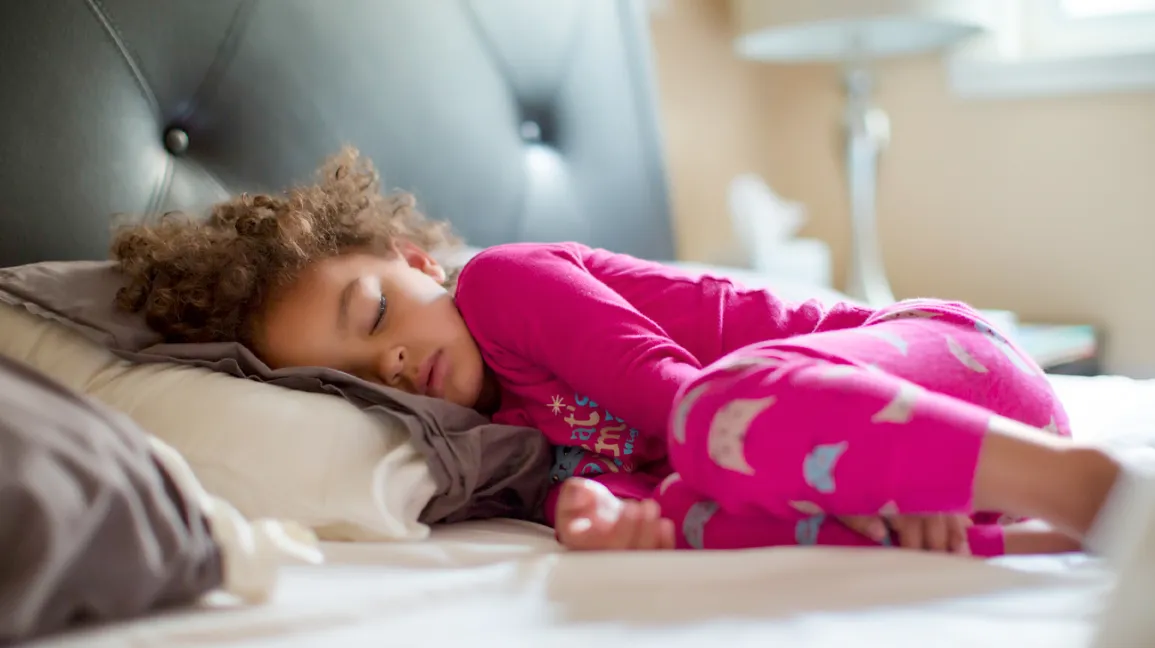Here in this post, we will be clear about what Sleep Apnea is and What Sleep Apnea Sound Like In A Child.
Sleep apnea affects both adults and children, and the symptoms are slightly different. This is why some parents find it hard to discern whether or not their children have sleep apnea or not.
Children with sleep apnea disorder are affected in such a way that they begin to have pauses in their breathing while they sleep. And the two main types of sleep apnea that affect children are obstructive sleep apnea and central sleep apnea (central apnea).
And another type, central apnea, occurs when the part of the brain responsible for breathing doesn’t function properly. It doesn’t send the breathing muscles the normal signals to breathe.
Between 7 and 11 per cent of children have a nightmare breathing issue, which can be sleep apnea, snoring, or something else. And around 90 per cent of them may be undiagnosed.
And discovering such symptoms can help seek an early diagnosis and proper treatment. And if left unsolved, sleep apnea can have significant consequences on a child’s growth, well-being, and behaviour.
So in this post, we will talk about everything you need to know about sleep apnea and the What Does Sleep Apnea Sound Like In A Child/Symptoms of Sleep Apnea in Children)
Sleep Apnea Sounds Like In A Child
Millions of people around the world are affected by sleep apnea, and it is characterised by repeated pauses in breathing during sleep, which can last from a few seconds to several minutes.
There are different types of sleep apnea disorders and the most common of them is obstructive sleep apnea, which occurs when the muscles in the back of the throat fail to keep the airway open, despite the effort to breathe.
This leads to a reduction in oxygen levels, causing the person to awaken briefly to re-establish breathing. This can occur multiple times throughout the night and can result in disrupted sleep, making it hard for the person to feel well-rested in the morning.
Sleep apnea as said in the word “sleep” is not just linked to sleep alone but has been linked to several serious health problems, including high blood pressure, heart disease, stroke, and memory problems.
Asus, sleep apnea can lead to daytime sleepiness, which can impact work and daily activities. Treatment options for sleep apnea include lifestyle changes, such as losing weight and avoiding alcohol and sedatives, using a continuous positive airway pressure (CPAP) machine, and undergoing surgery.
It is important for individuals who suspect they may have sleep apnea to see a doctor for a proper diagnosis and to discuss the best course of treatment.
Causes Of Sleep Apnea And Risk Factors
There are different causes of such a disorder, so are there numerous risk factors for it? Which will all be settled in this section of the article.
First, Sleep apnea causes the muscles in the back of the ear to fail/collapse while the child is sleeping, and this makes it difficult for them to breathe.
The risk Factor in children is different from the risk factor for adults.
And obesity is a main factor, mainly because it contributes to obstructive sleep apnea in children, Nonetheless, the condition commonly causes by enlarged tonsils or adenoids in children.
Other risk factors for obstructive sleep apnea in children can include:
- A (Past) Relative With Sleep Apnea
- Having specific medical disorders, such as:
- Cerebral palsy
- Down syndrome
- Sickle cell disease, etc.
Effects Of Untreated Sleep Apnea
Having an untreated Sleep Apnea is a risky move, and this leads to long periods of disturbed sleep, causing chronic daytime fatigue (Especially for children)
This can occur in the child having difficulty paying attention in school. And also they have hyperactivity, causing them to be misdiagnosed with attention deficit hyperactivity disorder (ADHD).
Children with such untreated disorders face difficulty thriving socially, growth delays, mental delays, heart problems, high blood pressure, high chance of stroke and heart attack in adults
And If sleep apnea is properly treated, these complications will likely be eradicated or maintained well that it won’t affect the patient/child much as they would untreated.
What Does Slee Apnea Sound Like In A Children/ Symptoms Of Apnea In Children
There are various symptoms of sleep apnea, seeing there is obstructive and central apnea which are similar, with a difference in snoring.
Below are some of the most common symptoms:
- Noisy snoring
- Coughing or choking during sleep
- Halts in breathing
- Inhaling and exhaling through the mouth
- Sleep anxieties
- Bedwetting
- Bad sleeping Postures.
These symptoms are not only obvious at night, though as for children with restless night sleep because of this disorder, daytime can also be fatiguing, falling asleep, and finding it hard to wake up in the morning.
But Infants and young children with sleep apnea have low chances of a snore, especially those with central apnea. Sometimes the only symptom of sleep apnea in this age group is troubled or disturbed sleep.
FAQ
Treatment For Sleep Apnea In Children
There are no really any guidelines about treating sleep apnea in children. For instance, a doctor might choose not to treat a mild sleep apnea condition without symptoms, at least not immediately.
And some other children are lucky enough to outgrow the disorder, so the doctor does is monitor their condition to observe for any improvements. And the benefits of doing this have to be calculated with the risk of long-time complications from the untreated disorder.
Here in the section of this guide are some of the treatments for sleep apnea
Lifestyle changes
This is applicable in the cause of obesity, doctors commonly recommend physical activity and diet to treat sleep apnea, in such circumstances.
Surgery
In cases when the disorder is caused by enlarged tonsils or adenoids, surgical removal is the best way to go about it, to open up the child’s airway.
A study shows that adenoid removal is equally as productive as tonsil and adenoid removal for a child who fulfils the following criteria:
- Below the age of 7
- No childhood Obesity
- Had reasonable, as contradicted to serious, obstructive sleep apnea
- Had small tonsils
- Continuous positive airway pressure therapy
Oral appliances
Children wear this appliance, to keep their jaw in a forward position, keep the tongue in the right place, and also keep the airway open.
And this appliance is more effective, and productive, which is why children tend to tolerate it way better than others, so they’re more likely to utilize them at night.
It is important to note that Oral appliances can’t help every child, but they might be a choice for older children who no longer experience facial bone growth.
How Urgent Is Sleep Apnea In Children?
Sleep Apnea can be very serious, and have serious complications such as failure to grow and breath problems and sometimes death.
Conclusion on What Sleep Apnea Sounds Like In A Child
In conclusion, the guide and the details in the post are well enough information on what sleep apnea sounds like in a child, there should no longer be any confusion on the decision of whether your child has sleep apnea or not.
And it is important to note that, in every situation don’t assume by better still reach out to a consultant, to be in rhe safe zone. As said earlier in the post, having untreated sleep apnea can be very dangerous.
So make sure to carefully read through the details in the post to get familiar with important information.
Be sure to shear this guide with friends and family.
Robomin is a freelance writer and blogger who covers topics related to Account Creation, gadgets, Refunds, and how to delete An Account. He has a passion for new and innovative technology and enjoys sharing his knowledge with others

